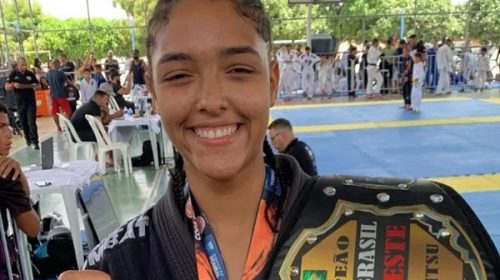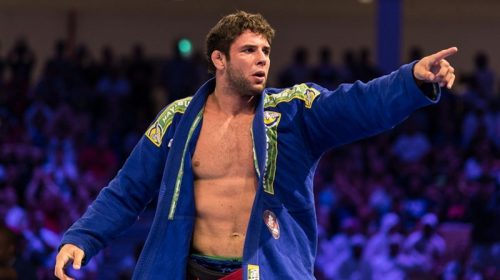
What Should I Look for in a Kids’ Martial Arts School
It takes more than just looking for physical fitness or self-defense abilities when choosing the best martial arts school for your child. Finding a supportive setting that encourages self-improvement, discipline, and respect is the key. When choosing a martial arts school for your child, there are a few important things to take into account. Every aspect, from the environment of the classroom to the instructors’ experience, is crucial in determining how your child learns.
For children, martial arts may be a fantastic experience that promotes discipline, focus, and respect in addition to physical health. However, for your child to have a good and fulfilling experience, picking the best martial arts school is essential. When choosing a martial arts school specifically designed for children, keep the following important criteria in mind:
1. Safety Measures and Facilities
In a martial arts school tailored for children, strict procedures and practices are used in safety measures to reduce the possibility of accidents during training. To reduce potential risks, this entails setting up structured, supervised sessions, providing the necessary safety equipment, and keeping training areas neat and orderly.
To promote a secure learning environment, facilities are important. The availability of first aid, equipment upkeep, and well-equipped training facilities are all crucial elements. For youngsters to train in martial arts, a clean, safe environment is essential so they can concentrate on improving their skills in a safe, encouraging environment.
2. Qualified and Experienced Instructors
In a martial arts school, qualified instructors have received specific training in teaching martial arts, particularly to younger students. Beyond just being technically skilled, they also have a strong understanding of child development, use efficient teaching strategies, and place a high value on providing a supportive and stimulating learning environment.
Experience is equally important. Skilled instructors have refined their teaching skills through years of experience and engagement with a wide range of students. Their knowledge of different ages and learning styles enables them to adjust their methods and give every student individualized instruction.
3. Age-Appropriate Curriculum and Teaching Methods
A kids martial arts school with an age-appropriate curriculum offers structured classes that are tailored to the mental, physical, and emotional development of particular age groups. With an emphasis on fundamental motions, balance, and fundamental methods for younger kids, it progressively advances to more complex abilities and character development for older youngsters.
Each age group has specific features that must be addressed by the teaching strategies used in these schools. Younger pupils are enjoyably introduced to basic abilities by using interactive and playful methods like games and storytelling. When kids get older, a combination of directed practice sessions, videos, and organized instruction helps them acquire new skills and develop their moral character.
4. Positive Learning Environment
In a martial arts school, encouraging a positive learning atmosphere is essential for kids’ development. The goal of this setting is to foster a sense of encouragement, motivation, and support for the pupils.
Respect for one another, support for one another, and an emphasis on personal development rather than competitiveness define a positive learning environment in a martial arts school. Teachers are crucial in creating this environment because they place a strong emphasis on collaboration, friendship, and celebrating each student’s accomplishments.
5. Trial Classes and Parent Observation
Trial classes give potential students the chance to get a firsthand look at the teaching methods, campus culture, and student-teacher dynamics of the school. During these sessions, kids can take part in a class and experience the activities and environment. Parents can determine whether the school fits their child’s interests and learning style by using this first-hand experience.
Reputable martial arts schools frequently promote parent observation, which gives parents a chance to see the lessons their child will be doing. Parents can evaluate the teaching strategies, the attitudes of the instructors, and the general school atmosphere by watching classes. It offers insightful information on the degree of participation, safety precautions, and the school’s dedication to the growth of its students.
6. Community Reputation and Reviews
A martial arts school’s standing in the community says a lot about its standard, credibility, and dedication to the welfare of its students. Having a good reputation in the community is frequently the result of happy parents, accomplished students, and the school’s involvement in the community.
The reviews, derived from both online and offline sources, provide a significant understanding of the experiences of other parents and students regarding the martial arts school. They give information about the teaching strategies, safety precautions, and general student and family satisfaction levels, as well as the school’s strengths.
7. Flexibility and Convenience
Scheduling flexibility makes sure that lessons fit into a family’s hectic schedule. Martial arts schools that provide flexible class schedules or enable make-up courses can work with the schedules of parents and kids to ensure regular attendance without interfering with other obligations.
The school’s location is all part of convenience. Families find it easier to regularly attend classes when a martial arts school is conveniently located because it cuts down on travel time. Parents’ and students’ general convenience is further enhanced with parking facilities and easy access.
8. Communication and Parental Involvement
The martial arts school makes sure parents are updated about their child’s development, class schedules, and any needed information through efficient communication methods. Parent-teacher meetings, emails, and newsletters are examples of clear channels of communication that help parents keep informed and active in their child’s martial arts adventure.
Promoting parental involvement in the school environment nurtures a feeling of solidarity and belonging. Parents have the opportunity to actively participate in and see their child’s growth and triumphs in martial arts when schools encourage parental participation in events, workshops, or even volunteer opportunities.
Conclusion
In conclusion, when choosing the best martial arts school for kids, there are several important things to take into account. Young students can have a rewarding and enlightening experience at a martial arts school that places a high priority on safety protocols, certified teachers, an age-appropriate curriculum, a positive learning atmosphere, and parental engagement. A well-rounded martial arts education for kids is also greatly influenced by factors like community reputation, adaptability, and good communication. Parents can choose a martial arts school that not only teaches techniques but also imparts important life skills, promotes growth, and develops a lifetime passion for martial arts by carefully weighing these factors.


























